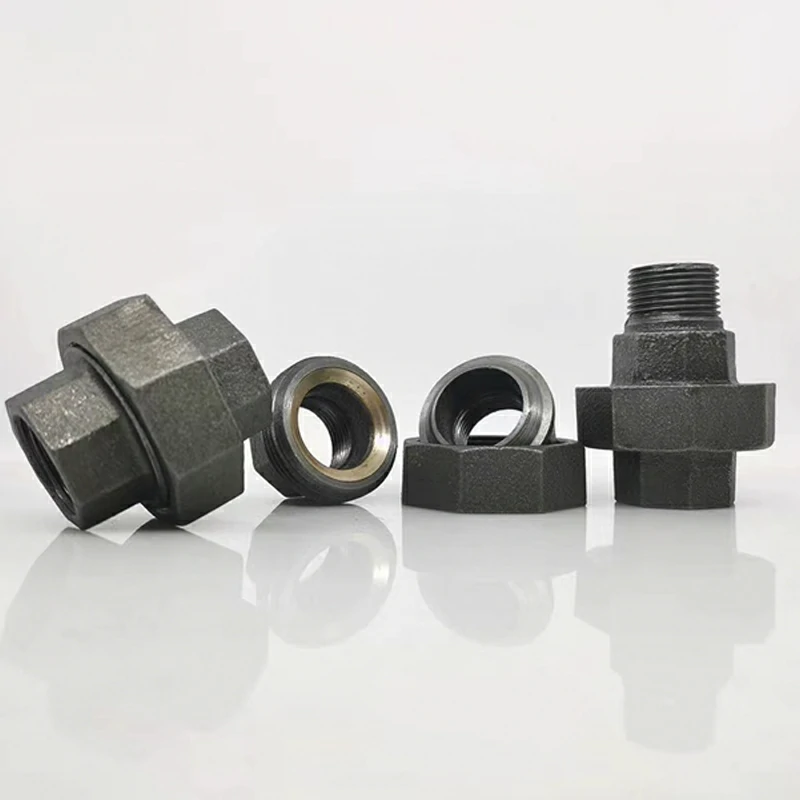Iron pipe union play a crucial role in various plumbing and piping systems. They provide a convenient means of connecting and disconnecting pipes, allowing for easy maintenance, repairs, and modifications. In this comprehensive guide, we’ll explore the functions and applications of iron pipe unions.
What is an Iron Pipe Union?
An iron pipe union is a type of fitting used to join two pipes together. It consists of three main components: a union nut, a female end, and a male end. The union nut has internal threads that match the external threads of the male and female ends. When tightened, the union nut compresses the male and female ends together, creating a leak-proof joint.
Functions of Iron Pipe Unions:
Connection and Disconnection: The primary function of an iron pipe union is to provide a reliable and easily detachable connection between two pipes. This allows for quick disassembly and reassembly of pipes, facilitating repairs, replacements, or modifications without the need for cutting or rethreading the pipe.
Sealing and Leak Prevention: Iron pipe unions are designed to create a tight seal between the connected pipes. The compression of the male and female ends against the union nut creates a secure joint that minimizes the risk of leaks or drips.
Flexibility: Unions offer flexibility in piping systems by allowing for angular misalignment or slight movement between connected pipes. This is particularly useful in situations where thermal expansion and contraction of pipes occur.
Branching and Redirection: Iron pipe unions can be used to create branch connections in plumbing systems. By using a tee or cross-shaped union, additional pipes can be connected to the main line, allowing flow diversion or the creation of multiple outlets.

Applications of Iron Pipe Unions:
Iron pipe unions find applications in various industries and systems, including:
Plumbing Systems: Unions are commonly used in plumbing systems for residential, commercial, and industrial applications. They facilitate the installation and maintenance of pipes carrying water, gas, or other fluids.
HVAC Systems: Heating, ventilation, and air conditioning (HVAC) systems often incorporate iron pipe unions. They enable easy assembly and disassembly of pipes carrying heated or cooled fluids throughout the building.
Process Piping: Iron pipe unions are widely used in process piping applications, such as in chemical plants, refineries, and manufacturing facilities. They allow for the connection and disconnection of pipes during maintenance, cleaning, or equipment replacement.
Industrial and Municipal Water Supply: Iron pipe unions are utilized in water supply systems for industrial and municipal applications. They facilitate repairs, extensions, or modifications to the water distribution network.
Fire Protection Systems: Fire sprinkler systems and other fire protection systems often incorporate iron pipe unions. They allow for easy installation, relocation, or replacement of pipes and sprinkler heads when needed.
Types of Iron Pipe Unions:
There are different types of iron pipe unions available, including:
Threaded Unions: These unions have male and female ends with matching threads that are screwed together. They are suitable for low-pressure applications and are commonly used in residential plumbing systems.
Flanged Unions: Flanged unions consist of flanged ends that are bolted together, providing a more robust connection suitable for high-pressure and high-temperature applications.
Grooved Unions: Grooved unions use a grooved mechanical coupling system, where the pipes are joined together using gaskets and couplings. They are commonly used in fire protection systems and other applications requiring quick and reliable connections.
Considerations for Installation:
When installing iron pipe unions, consider the following:
Compatibility: Ensure that the union material is compatible with the pipes and fluids being conveyed. Different materials, such as cast iron, ductile iron, or steel, may have different compatibility requirements.
Thread Sealing: Properly seal the threaded connections using appropriate sealing methods, such as pipe tape or thread sealant, to prevent leaks.
Tightening Torque: Follow the manufacturer’s recommendations for tightening torque to achieve a secure and leak-proof joint without damaging the union or the pipes.
Inspection and Maintenance: Periodically inspect the unions for signs of wear, corrosion, or leaks. Replace any damaged or worn-out unions promptly to maintain system integrity.
Remember to consult the relevant codes, standards, and guidelines specific to your application when installing or working with iron pipe unions.
This comprehensive guide should provide you with a good understanding of iron pipe unions, their functions, and applications.